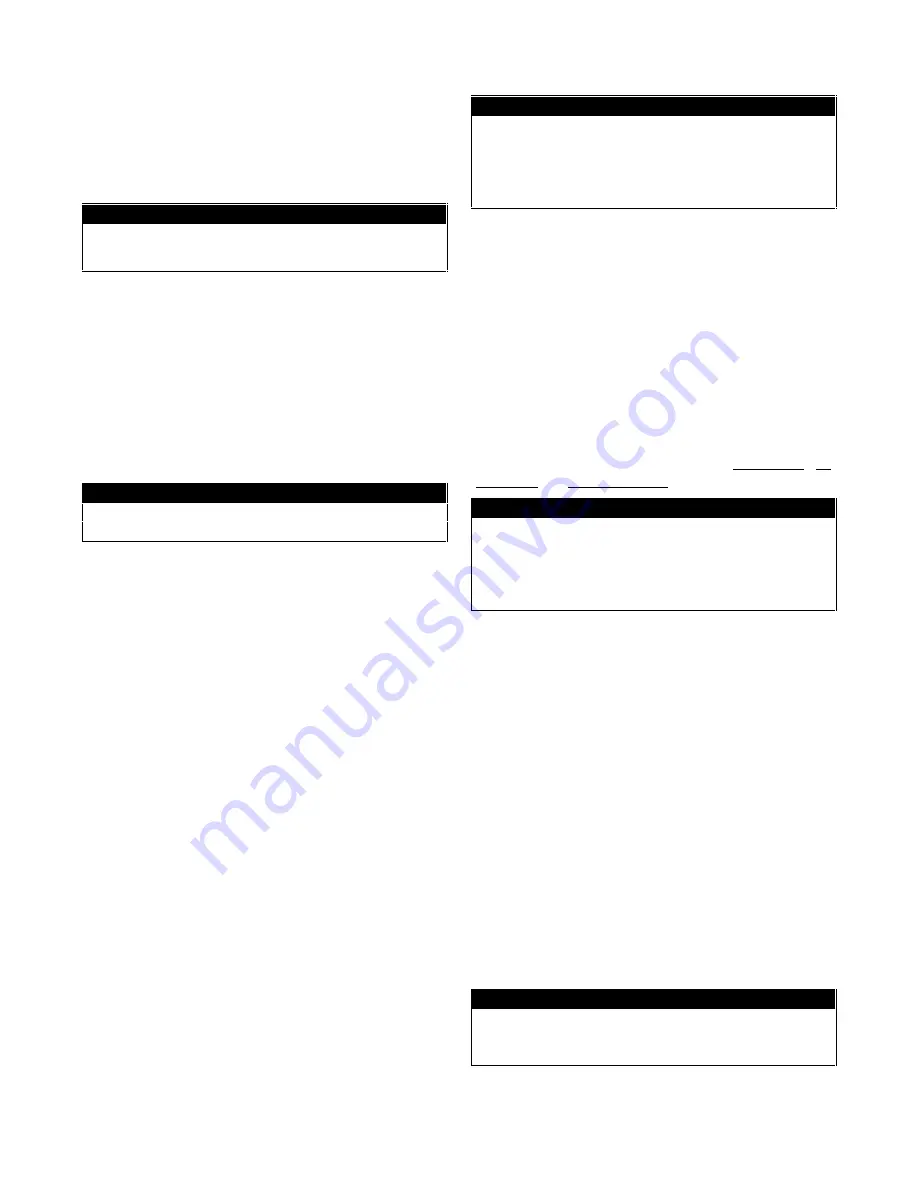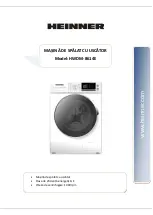
COPYRIGHT
TENNANT COMPANY 1999
3
Run on Stable Surface:
Always operate Dryers on a
stable flat surface such as the floor. Do not operate Dryers
from places where they can fall or be pulled down causing
injury. Beware that Dryers may vibrate or be pulled from
smooth surfaces such as counter tops and cause an injury,
fire or electrical hazard.
WARNING
To reduce the risk of fire or electric shock, do not use Dry-
ers with a solid-state speed control device.
Air Intakes Must Be Clear:
Operate Dryers away from
draperies and other materials that may come in contact
with the air intakes. Do not allow any material to clog or
block air intakes, as this may cause Dryers to overheat and
result in a fire or electrical hazard.
Keep Foreign Matter Out:
Do not allow oil, grease,
solvents or other matter (including sawdust and drywall
dust) to be drawn into the air intakes of Dryers. Never di-
rect fogged or liquid chemicals of any kind into the air
intakes of Dryers.
CAUTION
Never operate Dryers in pooled or standing water, as this
may create a risk of serious injury from electrical shock.
Don’t Operate Without Safety Screens:
Never oper-
ate Dryers without the factory installed safety screens on
the air inlets and air exhaust as the rapidly revolving wheel
can cause serious injury.
Keep Away From Heaters:
Do not use Dryers for cir-
culating hot air by placing the intakes close to a heater.
The housing could melt or the motor could overheat and
cause a fire or electrical hazard.
Keep Away From Combustible Gas:
Do not operate
Dryers in an area containing combustible gas. This could
cause a danger of fire or explosion. Ventilate environments
that may be explosive.
Don’t Modify Unit:
Never modify the motor, wiring or
casing of Dryers for any reason. Modifications to Dryers
can lead to fire or electrical hazards.
Share Owners Manual:
Be sure to include a copy of the
Dryer Owners Manual whenever you loan, rent, or other-
wise allow someone else to use your Dryers. They need the
same safety information that you require for safe efficient
operation. Make sure that all technicians and operators
have read and understand the manual.
Maintenance or Repair:
Do not attempt to disassemble
or repair Dryers if you are not qualified to do so. If the
Dryer is not working as it should, return it to an authorized
dealer or distributor for servicing. Note: For information
about authorized repair and maintenance call our Customer
Service Department at 1-800-522-7839.
DANGER
Do not attempt to service or clean the Dryer while it is
plugged into an electrical outlet or while the wheel is
turning as this may lead to risk of electrical shock or in-
jury. It is dangerous for an unqualified individual to at-
tempt to disassemble or repair the Dryer.
DRYER FEATURES
Dryers feature durable polyethylene housings, durable
switches and handles, and molded venturi air inlets. Metal
parts are treated for corrosion resistance. The efficient
motors reduce energy consumption and the engineered
four point motor mount is extremely durable. You may
find that they operate more quietly, last longer and deliver
greater airflow and static performance than competitive
airmovers.
PRINCIPLES OF DRYING
Given any drying situation, there are three factors that can
be managed for fast successful drying: temperature, air
movement and humidity control.
IMPORTANT NOTE
It is not within the scope of a users guide to teach restora-
tion. The information in this manual should serve as a ref-
erence only. It is strongly recommended that IICRC Certi-
fication courses be completed before water damage resto-
ration is attempted.
Airflow Circulation
Dryers are designed to deliver a high volume laminar air-
flow over or under wet surfaces for speed drying. Airflow
speeds the rate of evaporation, helps prevent mold growth,
and reduces the risk of secondary damage. Circulating air
speeds evaporation by removing the "boundary layer" of
saturated air that hangs near wet surfaces. The moist air is
whisked away and replaced with dryer air.
Place at least one Dryer in each room or one for every 200
square feet. For best results when walls are wet, place one
Dryer for each 8-10 feet of wall, pointed toward the wall at
a 45-degree angle, with all Dryers pointed in the same cir-
cle around the walls to create a vortex of airflow that will
reach all surfaces in the room.
Ensure that all affected areas have good airflow. Open
doors and operate Dryers to maintain good air circulation.
Doors may need to be braced to prevent them from closing
as a result of air movement.
WARNING
Do not, under any circumstances, remove the grounding
plug from the cord. To do so may create a safety hazard
and void the warranty.


























